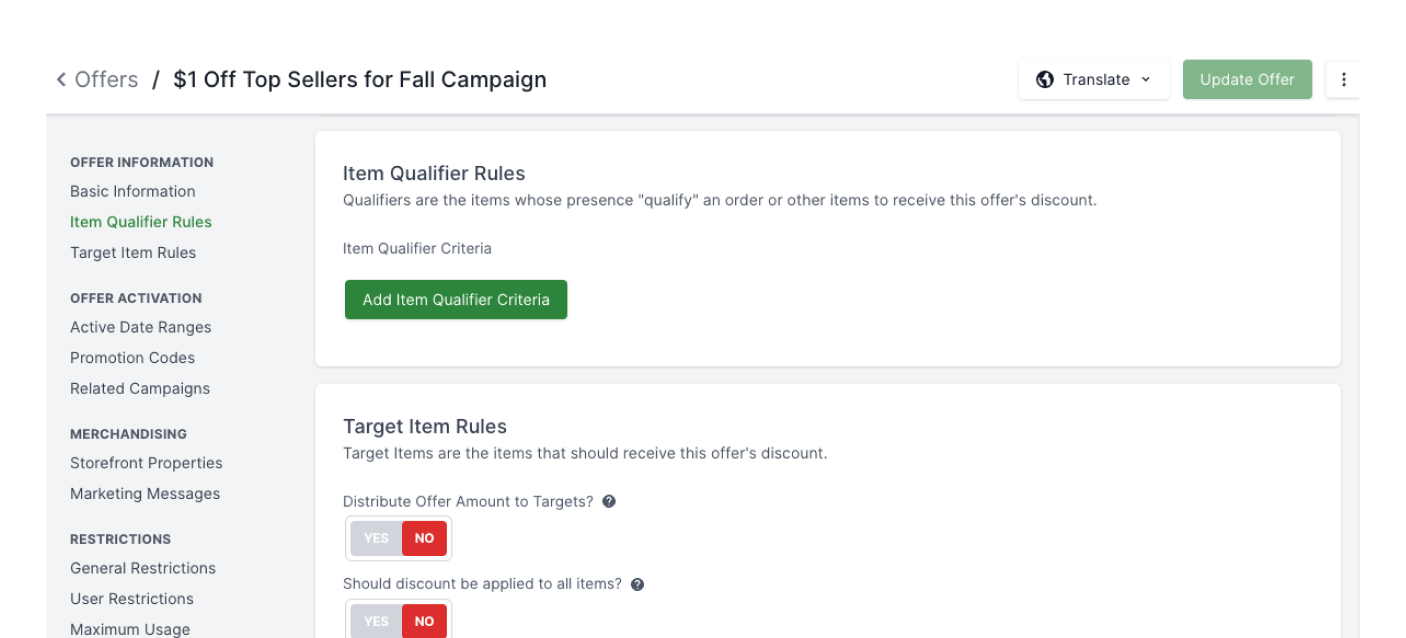Key Considerations for Effective eCommerce Inventory Management
Written by
Marie Standeven
Published on
Mar 21, 2025
Effective inventory management is a vital component of success for eCommerce businesses. From ensuring product availability to streamlining fulfillment, having the right systems and processes in place can make all the difference in meeting customer expectations and driving business growth.
In today's fast-paced online retail landscape, merchants need robust inventory management solutions to handle various challenges, such as tracking stock levels across multiple locations and managing pre- and backorders. This article explores key inventory management capabilities that modern platforms offer.
Inventory Locations and SKU-Level Tracking
At the core of any comprehensive inventory management system is the ability to maintain detailed records of stock levels and product information. This typically involves setting up inventory locations representing physical stores, warehouses, or other fulfillment centers.
The system needs to track SKU-level inventory data for each of these locations. This means associating specific stock-keeping units (SKUs) with the corresponding products and recording details like the quantity on hand, the amount reserved, and the quantity on order. With this granular visibility into inventory, merchants can make informed decisions about product procurement, distribution, and fulfillment.
Beyond tracking stock levels, the inventory management platform can allow users to configure key attributes for each SKU. This could include details like the product's fulfillment strategy (e.g., physical, digital, or never-check inventory) and the inventory reservation strategy (e.g., reserve on add to cart, reserve on submit order).
These settings help ensure the system is configured to meet required business use-cases during critical customer-facing workflows, such as adding items to the shopping cart and completing the checkout process. For example, setting the fulfillment strategy to "physical" would trigger real-time inventory checks when a customer tries to add a product to their cart, preventing overselling of the item.
Soft Reservations and Hard Transactions
When a customer places an order, the inventory management system reserves the corresponding inventory to ensure it is not sold to another customer. However, there are different approaches to handling reservations especially prior to checkout, and merchants may choose a method that aligns with their business needs.
Soft reservations serve as temporary holds on inventory during checkout, allowing customers a brief period—often around five minutes—to complete their purchase before the reservation expires. If the order is successfully placed within that window, the soft reservation is converted to a hard reservation, permanently reducing available stock. If the order is not placed, the soft reservation will naturally expire and does not require any rollback interaction.
This approach can improve the customer experience by accommodating checkout delays, such as payment issues or abandoned carts. Allowing a short grace period can help merchants reduce overselling risks while maintaining flexibility.
Once an order is confirmed and a hard reservation is in place, the inventory management system may support fulfillment workflows such as updating stock levels, triggering shipment notifications, or integrating with order and warehouse management systems.
Managing Future Stock: Pre-Orders and Back-Orders
While core inventory tracking and reservation capabilities are essential, modern eCommerce businesses must also contend with the complexities of managing future stock. This includes handling pre-orders for products that haven't yet been released and back-orders for items currently out of stock but expected to be replenished soon.
To support these scenarios, some inventory management platforms allow merchants to mark certain SKUs as eligible for future stock reservations. This may involve setting a "future stock enabled" flag and specifying details like an expected restock date.
When a customer orders a product with future stock availability, the system can create a "future inventory reservation" instead of a standard hard reservation. This method sets aside inventory for the customer without immediately adjusting the available stock count. Instead, the order remains in a "pending inventory" status until new stock arrives.
Once the expected restock date is reached and inventory is received, the system may automatically convert future inventory reservations into hard reservations, allowing fulfillment to proceed.
To manage demand effectively, merchants may configure safeguards to prevent over-ordering of future stock, such as setting quantity limits or restricting the ability to add more items than are available for pre-order or backorder.
Inventory Checks and Updates
To ensure accuracy and reliability, inventory management systems often perform product availability checks throughout the shopping and checkout process. These checks help validate inventory levels when customers add items to their carts and submit their final orders.
Such inventory validation can occur at both the front end (e.g., in the customer-facing storefront) and the back end (e.g., during order processing). By implementing these safeguards, merchants can minimize overselling risks and associated logistical challenges.
Because inventory levels fluctuate with new stock arrivals, order fulfillment, and product returns, keeping the system up to date is essential. Many inventory management platforms provide options for updating SKU quantities, either manually or through automated processes that sync with warehouse and order management systems.
Regardless of the approach, maintaining accurate inventory data can help prevent overselling, enhance order fulfillment efficiency, and improve the overall customer experience.
Prioritizing and Fulfilling Pending Orders
For businesses handling future stock scenarios such as pre-orders and backorders, effective order management is key. Once new inventory is available, merchants need a way to prioritize and fulfill pending orders efficiently.
Some inventory management systems categorize orders in a "pending inventory" status to indicate that required stock is unavailable. When restocked inventory arrives, the system may automatically identify associated pending orders and mark them as ready for fulfillment.
Flexibility in processing pending orders can be beneficial. Merchants may choose to prioritize specific customers or order types, or wait until all items in an order are available before proceeding with fulfillment. Advanced inventory management platforms often provide tools and workflows to accommodate these business-specific preferences.
Additionally, partial fulfillment options may be useful, allowing merchants to ship available items while keeping the remaining items in a pending status. This strategy can help improve customer satisfaction by ensuring they receive products as soon as possible rather than waiting for the entire order to be ready.
By incorporating robust order management capabilities, an inventory system can help optimize customer experience and improve business efficiency.
Conclusion
Effective inventory management is essential for eCommerce businesses aiming to thrive in a competitive market. By tracking SKU-level stock levels, managing pre-orders and backorders, and optimizing reservation strategies, merchants can overcome common inventory challenges while improving the customer experience.
Leveraging features such as inventory location management, real-time availability checks, future stock handling, and intelligent order fulfillment can provide merchants with the visibility, control, and flexibility needed to stay ahead. A well-designed inventory management system can drive sales, enhance operational efficiency, and foster long-term customer loyalty.


